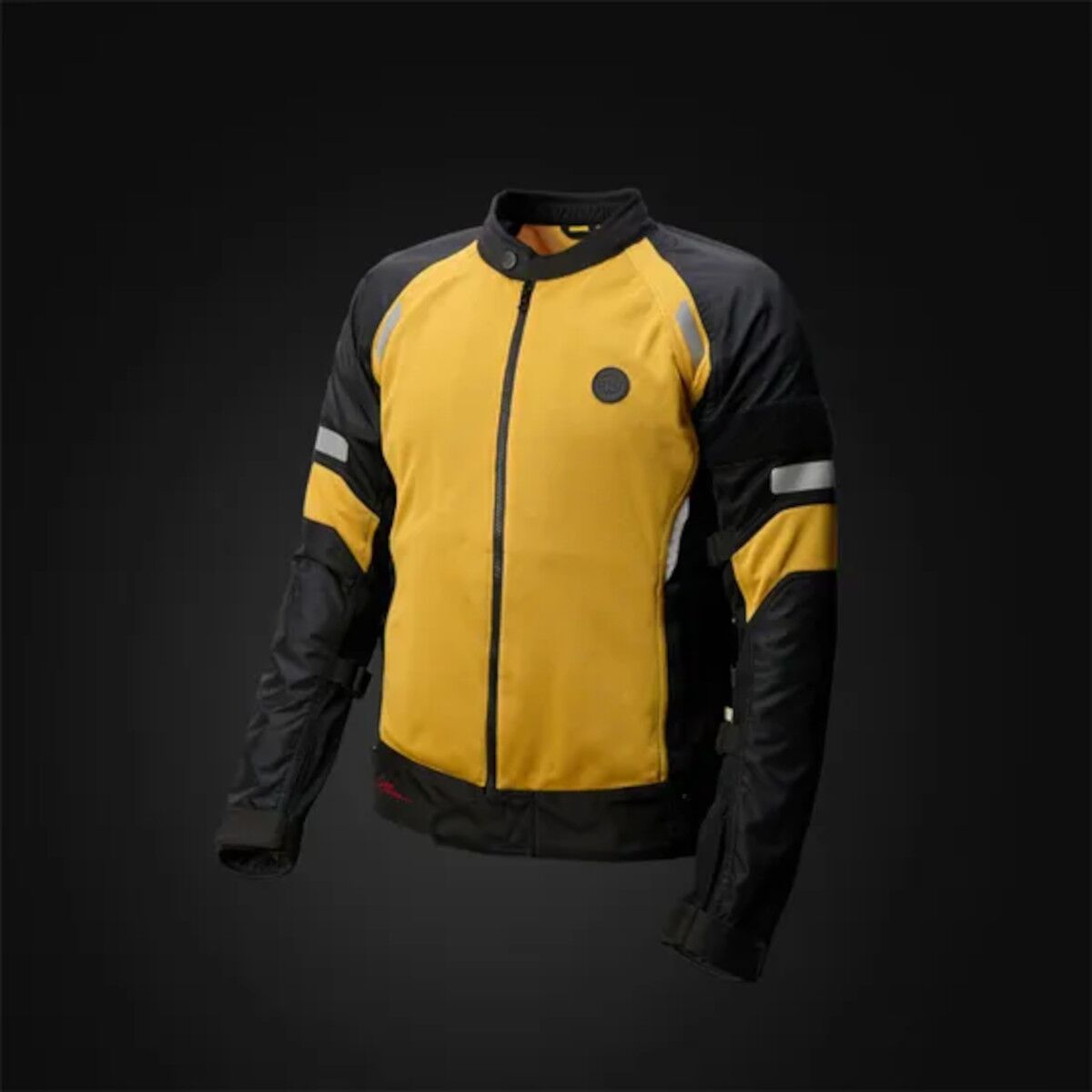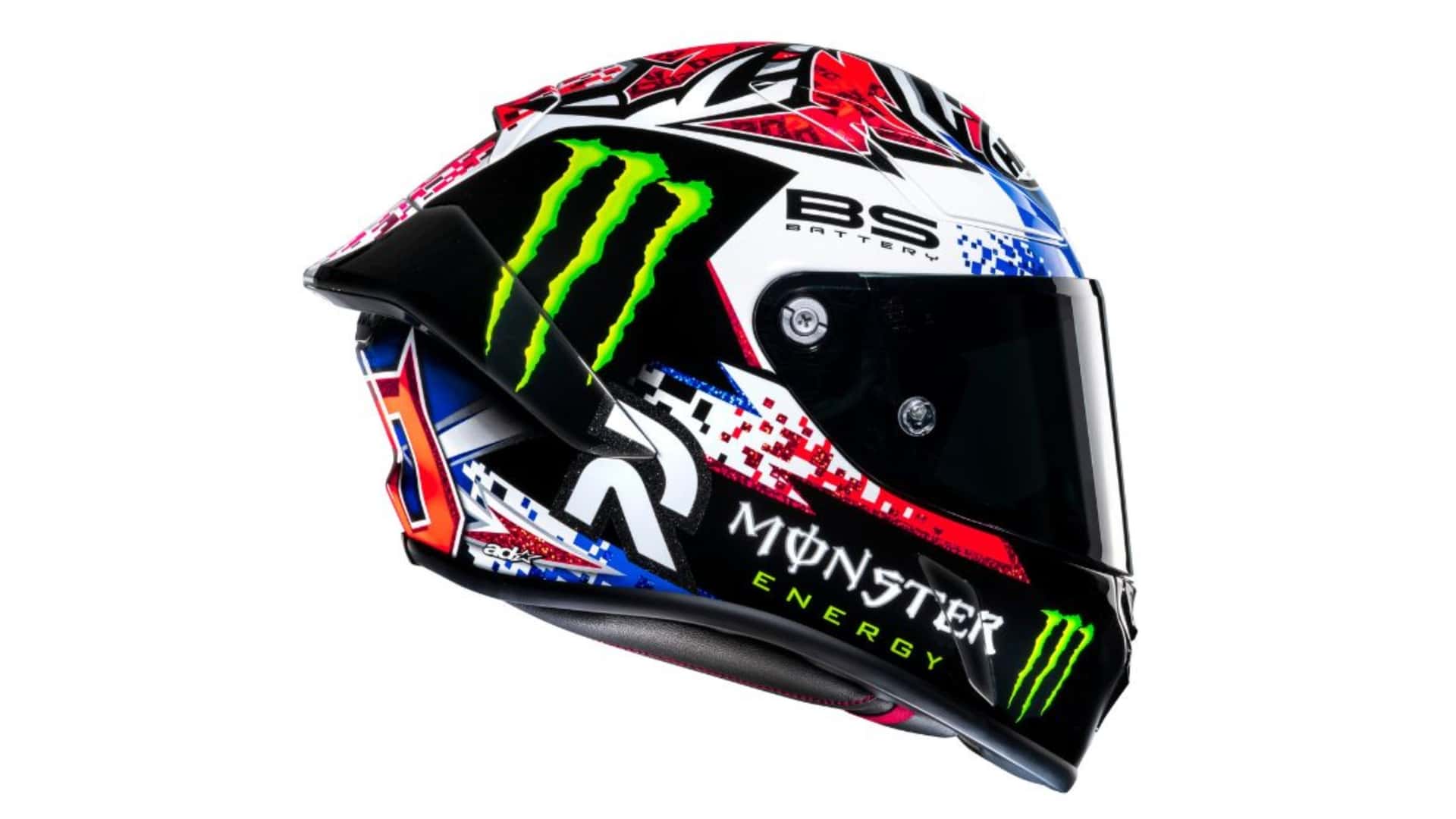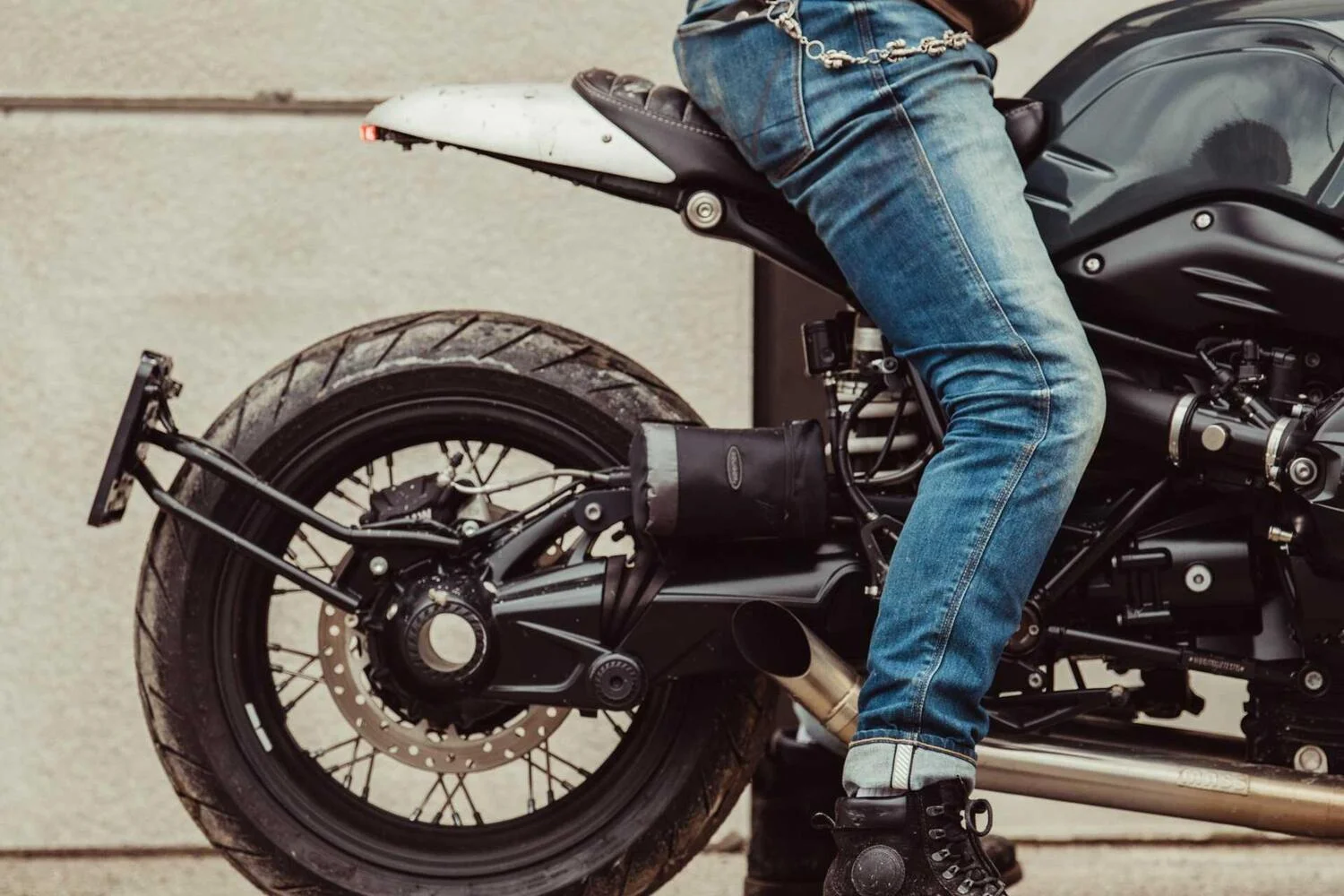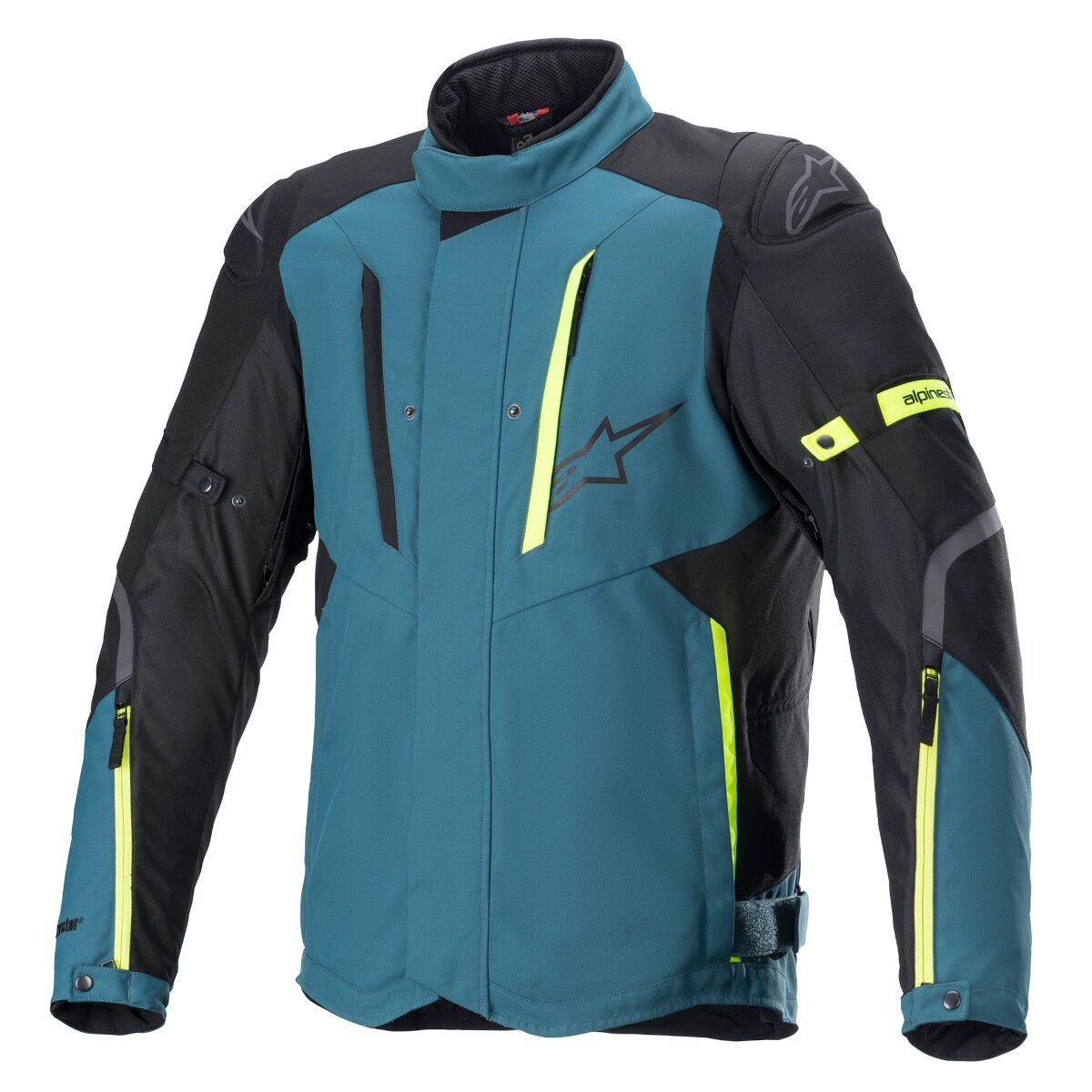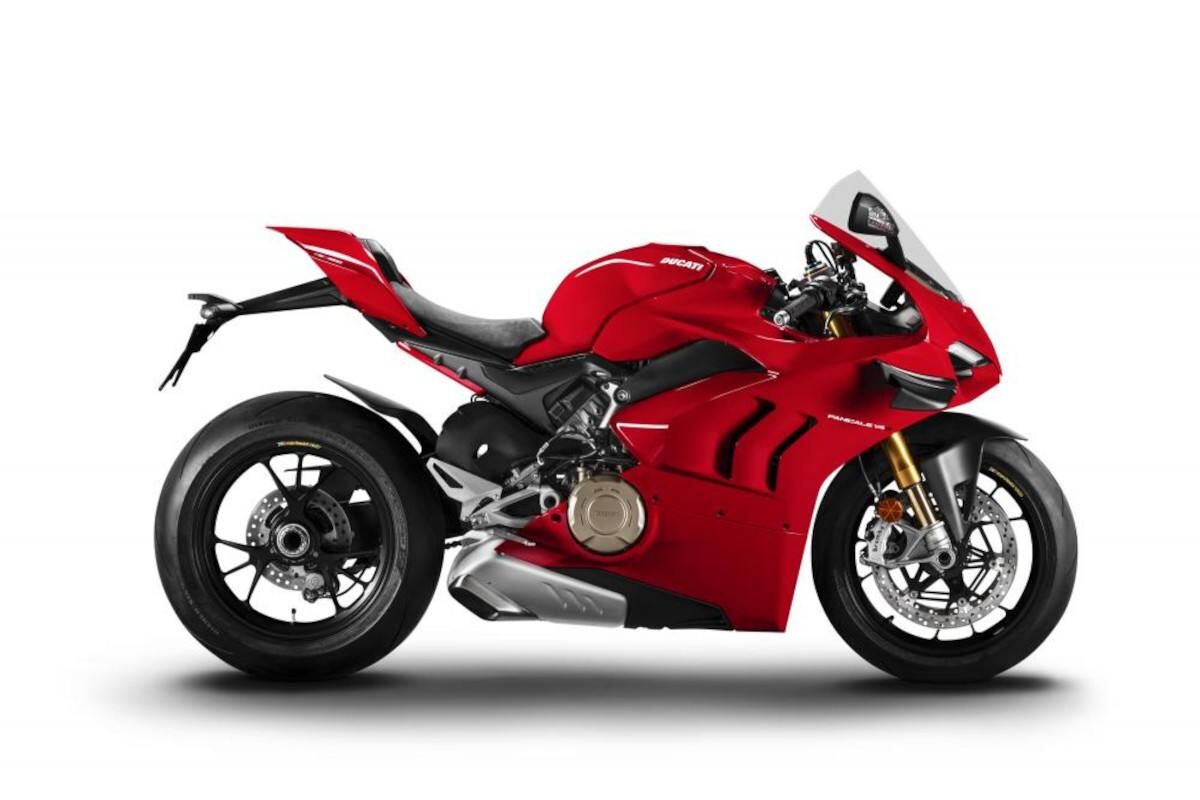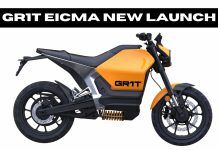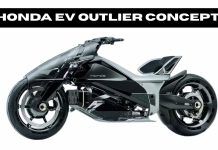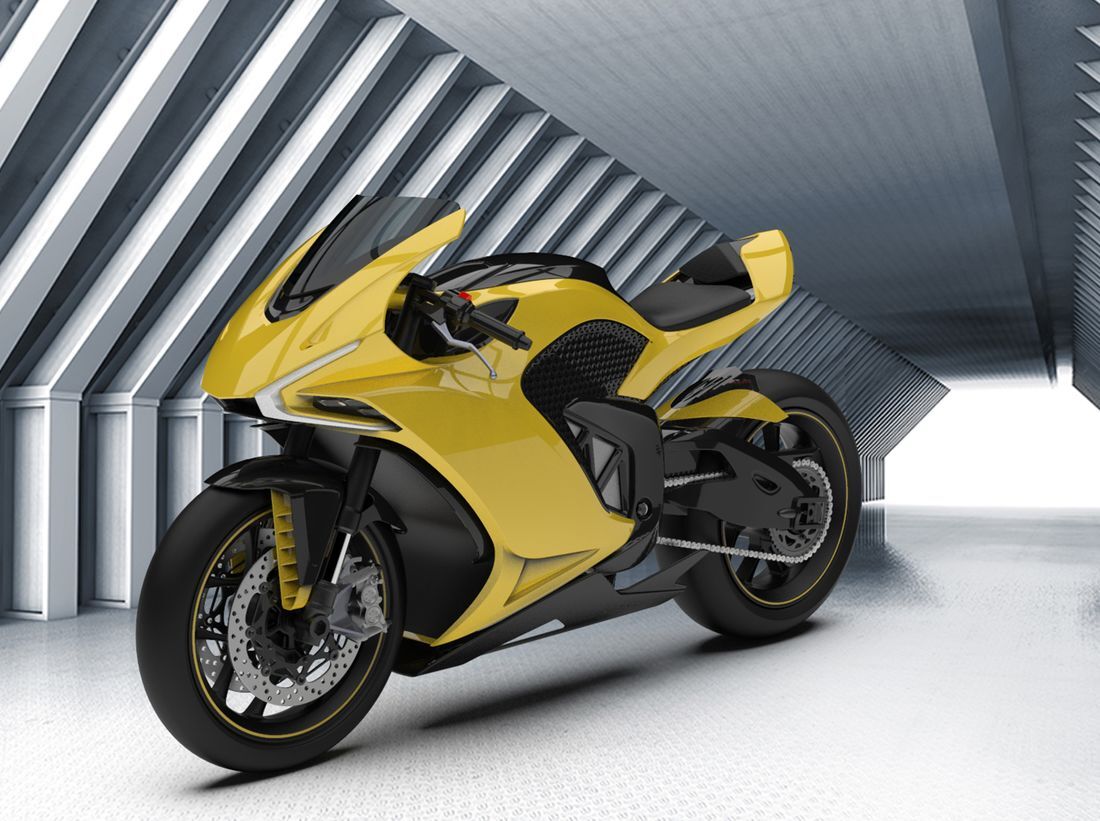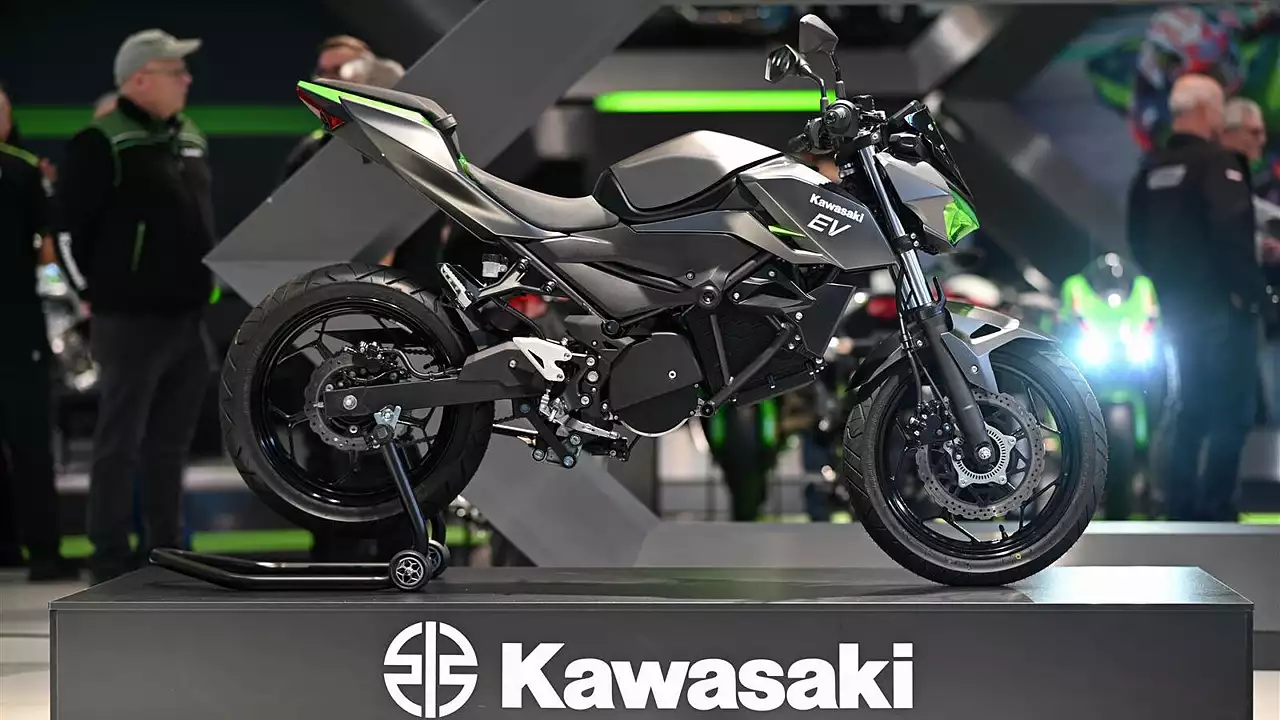Executive Summary
The TVS Apache RTR 310 emerges as a significant contender in the Indian performance motorcycle segment, positioned as a feature-rich naked streetfighter. Launched with a starting ex-showroom price of Rs 2.40 lakh, this model aims to provide a premium and engaging riding experience through a combination of aggressive styling, advanced electronics, and refined ride dynamics.
The motorcycle’s core strengths lie in its striking aesthetics and a comprehensive suite of electronic rider aids. Even the base variant includes traction control, cruise control, Drag Torque Control, and rear-wheel lift mitigation as standard. Further enhancing its appeal, optional Built-To-Order (BTO) kits offer highly sophisticated functionalities such as cornering ABS, launch control, and keyless ignition.1 The recalibrated throttle response is designed to deliver a smoother and more precise ride.1
This aggressive inclusion of sophisticated rider assistance systems, either as standard or accessible options, demonstrates TVS’s strategic commitment to making advanced motorcycle technology available to a broader audience in the Indian market. This approach not only enhances the RTR 310’s value proposition but also establishes a new benchmark for the sub-400cc segment, potentially prompting competitors to upgrade their own offerings. This positions TVS as an innovative brand, dedicated to providing intelligent and safer riding experiences for a wider demographic.
However, a closer examination reveals certain areas that warrant consideration. Feedback from early adopters points to persistent concerns regarding engine vibrations, particularly at specific RPMs, and occasional electronic glitches affecting the TFT display.2 Furthermore, the optional climate-controlled seat has been noted for its stiffness, which could affect comfort during extended rides.5
While TVS has aimed for a smoother, more city-friendly throttle response through recalibration and a slight detuning of the engine, real-world rider experiences suggest that the bike can still feel high-strung and reactive in dense urban traffic.5 This indicates a persistent challenge in harmonizing the engine’s inherent performance-oriented character with the demands of everyday commuting in India’s often congested urban environments. The inherent characteristics of the engine and gearing might make it difficult to completely smooth out the low-speed throttle behavior without significantly compromising its sporty feel.
The RTR 310 enters a highly competitive segment, directly challenging established rivals such as the KTM 390 Duke, Bajaj Dominar 400, and BMW G 310 RR.9 Its aggressive pricing strategy, particularly for the fully-specced variants, positions it as a compelling value proposition within the 300-400cc category.
Introduction: The Evolved Streetfighter
TVS Motor Company’s recent launch of the new Apache RTR 310 in India signifies a notable advancement within its acclaimed Apache motorcycle series. This model is strategically positioned as a premium naked streetfighter, meticulously engineered to appeal to riders who seek a harmonious blend of aggressive aesthetics, state-of-the-art technology, and an exhilarating performance profile.1
The RTR 310 builds upon the well-established and proven platform of its faired sibling, the Apache RR 310. It inherits the distinctive 312cc liquid-cooled, reverse-inclined engine, a hallmark of this platform.1 However, the RTR 310 distinguishes itself with a unique naked streetfighter design and a deliberate focus on enhancing rideability through specific performance upgrades and an extensive feature set. This tailored approach is designed for both urban commutes and spirited rides.20
This nuanced product strategy by TVS is evident in the RTR 310’s engine tuning. Instead of merely re-bodying the RR 310, TVS has specifically calibrated the RTR 310’s engine and overall character to create a distinct “naked sport” or “freestyler” experience.20 The slight detuning (35.6 PS for RTR 310 vs. 38 PS for RR 310) 8 and recalibration, despite some user comments on throttle reactivity, are intended to make the RTR 310 more suitable for street performance and playful riding, rather than the outright track-focused aggression of the RR 310. This careful differentiation helps TVS avoid direct internal competition and allows the manufacturer to target distinct segments within the 300cc performance motorcycle market, thereby maximizing the utility of a shared platform.
This comprehensive report aims to provide an in-depth analysis of the TVS Apache RTR 310. It will cover its technical specifications, detailed performance characteristics, advanced electronic features, its competitive standing against key market rivals, practical ownership considerations including maintenance and spare parts, and specific pricing and dealership information for the Pune region. The goal is to offer a well-rounded and informed perspective for prospective buyers and motorcycle enthusiasts.
TVS Apache RTR 310: Specifications, Variants, and Pricing
Core Engine and Performance Enhancements
At its core, the TVS Apache RTR 310 is powered by a 312.12cc single-cylinder, liquid-cooled, reverse-inclined engine.10 This powerplant delivers a maximum output of 35.6 bhp (or 35.6 PS) at 9,700 rpm and a peak torque of 28.7 Nm at 6,650 rpm.8 Power is transmitted via a 6-speed gearbox.8
TVS has dedicated efforts to refining the throttle response, aiming for a smoother and more precise connection between rider input and engine output, without compromising the bike’s overall performance [User Query]. This refinement is achieved through a “smart torque filter” and an “intelligent” electronic throttle control system that dynamically adjusts ignition and fueling for a more linear torque delivery across the entire rev range.1 However, despite these stated efforts to achieve a smoother throttle, some real-world observations from reviewers present a contrasting view.
For instance, the throttle has been described as “reactive” and the bike as “almost over-eager and quite KTM-like in bumper-to-bumper traffic”.5 Similarly, the throttle has been noted to feel “jerky” in both Urban and Sport modes.9 This discrepancy suggests that while TVS has indeed made efforts to refine the throttle, the desired “smoother” response, particularly at low speeds and in stop-and-go traffic, may not be fully realized for all riders. The inherent characteristics of the engine, combined with short gearing, might still contribute to a perceived abruptness, despite the electronic recalibration. This indicates a gap between engineering intent and the actual rider experience, which could be a point of consideration for potential buyers prioritizing urban rideability.
A key technological addition is Drag Torque Control (DTC), which is integrated to mitigate rear-wheel hop during aggressive downshifts and intense engine braking.1 This feature works in tandem with the slipper clutch, significantly enhancing control and stability, especially during high-performance riding scenarios.1 The decision by TVS to include such a comprehensive suite of active safety and rider control features as standard, even on the entry-level variant, is a significant strategic move. This approach signals a shift from merely offering competitive performance to prioritizing rider confidence and safety across its product line. This enhances the bike’s appeal to a wider range of riders, including those new to performance motorcycles, and also sets a higher expectation for standard safety features within the segment. This could potentially pressure competitors to follow suit, leading to an overall safer and more technologically advanced motorcycle market in India.
Visually, while maintaining its aggressive streetfighter silhouette, the RTR 310 incorporates subtle updates. These include a new transparent clutch cover, sequential turn indicators, and the introduction of a fresh red paint scheme. Knuckle guards are also now provided as standard equipment.1
Standard Features and Advanced Technology
The entry-level variant of the TVS Apache RTR 310, available at an ex-showroom price of Rs 2.40 lakh, comes well-equipped with essential modern rider aids. These include traction control, cruise control, Drag Torque Control, and rear-wheel lift mitigation [User Query]. This variant is exclusively offered in a black color scheme [User Query].
Stepping up to the Rs 2.57 lakh version introduces a bidirectional quickshifter, which significantly enhances gear change fluidity [User Query]. This variant expands the color options to include red and yellow [User Query].
All iterations of the RTR 310 benefit from a sophisticated 5-inch TFT instrument cluster. This display offers comprehensive information and boasts SmartXonnect capabilities, including Bluetooth connectivity for turn-by-turn navigation, music controls, ride statistics, crash alerts, GoPro controls, and call/SMS alerts.1 The motorcycle also features a dynamic LED headlight system that adjusts brightness based on speed and ambient light, along with five distinct ride modes: Urban, Rain, Supermoto, Sport, and Track.1 While the 5-inch TFT screen is feature-packed, it has been noted that it can be “quite tightly packed with information and, at times, a bit too overwhelming to keep track of on the go”.5
Additionally, there have been reports of “notable electronic issues” such as the cruise control not activating and the TFT screen occasionally flashing “notifications for ABS and traction control failure,” even if the features were still functional.3 This highlights a critical challenge for manufacturers in the era of increasingly digital motorcycles: the sheer volume of advanced features, while impressive on paper, can sometimes lead to a compromised user interface and potential software instability. An overly cluttered display can distract the rider, and false electronic alarms, even if benign, can erode rider confidence and peace of mind. This suggests that TVS needs to prioritize UI/UX refinement and software robustness to ensure that its technological prowess translates into a seamless and reliable rider experience, rather than becoming a source of frustration.
Built-To-Order (BTO) Kits: Dynamic and Dynamic Pro
TVS offers two Built-To-Order (BTO) kits, allowing riders to customize their Apache RTR 310 with advanced features. This tiered, modular approach enables TVS to cater to a diverse range of customers with varying budgets and technological preferences. It allows them to offer a competitively priced entry point while providing enthusiasts the option to spec up to a truly premium, feature-laden machine. This strategy not only maximizes market penetration but also allows TVS to manage manufacturing costs and complexity more effectively. It also signals a potential future trend in the Indian mid-capacity segment, where personalization and optional technology packages become more common, moving beyond rigid variant structures.
The Dynamic Kit, priced at Rs 18,000, significantly upgrades the bike’s suspension and utility. It includes fully adjustable suspension components, specifically a USD fork (43mm diameter) at the front and a pre-load adjustable monoshock at the rear.10 Additionally, this kit adds a durable brass-coated chain and a Tyre Pressure Monitoring System (TPMS) for enhanced safety and convenience.1
The Dynamic Pro Kit, available for Rs 28,000, represents the pinnacle of the RTR 310’s technological offerings. This top-tier BTO kit introduces a comprehensive suite of highly advanced features, including keyless ignition, launch control, and an extensive array of lean-sensitive electronics.1 The lean-sensitive suite comprises cornering traction control, cornering ABS control, wheelie control, slope-dependent control, rear lift-off control, and cornering drag torque control, all meticulously designed to optimize performance and safety while cornering.1
Opting for the Dynamic Kit effectively brings the ex-showroom price of the RTR 310 to approximately Rs 2.75 lakh, while the Dynamic Pro Kit pushes the price to around Rs 2.84 lakh (ex-showroom).1
It is important to note a discrepancy regarding a previously mentioned “climate-controlled seat.” While one source indicated the availability of “cooled seats” as an option with adjustable temperature 23, other recent reports explicitly state that “the cooled/ventilated rider seat is missing this time around”.22 This is further supported by reviews where the reviewer expressed gratitude that their unit
lacked the cooling seat due to discomfort from its hardware 5, and another noting the climate-controlled seat’s “stiffness” leading to discomfort in under an hour, recommending the standard seat instead.6 This contradiction suggests that a feature initially conceived as innovative and desirable faced significant practical challenges or received negative user feedback concerning comfort and usability in real-world conditions. Its apparent withdrawal or strong recommendation against it indicates that TVS recognized its limitations, despite the technological effort involved. This highlights the complexities of integrating novel comfort features into motorcycles, especially in diverse climates like India’s.
It underscores the importance of extensive real-world testing and prioritizing fundamental comfort over technological novelty. For consumers, it serves as a reminder that not all advanced features translate into a superior user experience, and sometimes simpler, proven solutions, such as a standard, well-padded seat, are preferable.
Ride Dynamics and Ownership Experience
Handling, Ergonomics, and Ride Comfort
The TVS Apache RTR 310 has garnered significant praise for its nimble and agile handling characteristics. Reviewers have consistently noted its ability to feel planted at high speeds and inspire confidence during cornering, a performance attribute largely credited to its lightweight chassis (169 kg) and sharp geometry.2
The motorcycle’s ergonomics are described as upright yet comfortable, making the bike suitable for both daily city commutes and longer highway rides. The handlebar position is designed to reduce the need for excessive forward lean, and the rider’s seat, despite its firmness, incorporates dense cushioning to enhance comfort over extended periods.3
The standard non-adjustable suspension setup is reported to strike a commendable balance between ride comfort and sporty handling.6 For riders seeking further customization and precise tuning, the optional Dynamic Kit provides fully adjustable USD forks at the front and a pre-load adjustable monoshock at the rear, allowing for fine-tuning to individual preferences and varying riding conditions.3
A significant highlight that contributes to the RTR 310’s ride dynamics is the fitment of high-quality Michelin Road 5 tires (110/70-R17 front, 150/60-R17 rear).10 These tires are consistently praised for providing excellent grip in both dry and wet conditions, which significantly contributes to rider confidence and overall handling prowess.3
The RTR 310’s braking system offers a sharp bite and strong performance, contributing to some of the shortest stopping distances in its category.3 The inclusion of adjustable levers further enhances rider convenience. However, some feedback suggests that the ABS calibration can be overly sensitive, leading to early intrusion during hard braking.3
While dual-channel ABS is a crucial safety feature, its calibration is a delicate balance. An overly sensitive system, designed to prevent wheel lock-up in all conditions, might intrude prematurely for experienced riders who prefer more aggressive braking and a later intervention threshold. This creates a trade-off between maximum safety for all riders and the nuanced control desired by skilled enthusiasts. This suggests that as rider aids become more sophisticated, manufacturers face the challenge of providing adjustable settings for features like ABS sensitivity. Offering selectable ABS modes, such as “Supermoto ABS” on the KTM 390 Duke where rear ABS can be turned off 19, could cater to a wider range of rider preferences and skill levels, enhancing the overall riding experience without compromising fundamental safety.
Addressing Common Feedback: Vibrations, Throttle Response, and Electronic Glitches
While initial models of the Apache RTR 310 garnered significant criticism for engine vibrations, TVS has implemented corrective measures. These include the addition of larger bar-end weights and revisions to the tank mounting.6 Current reviews suggest that vibrations are “better contained” but may still be noticeable, particularly through the grey rubber piece on the pillion seat at various RPMs.3
This indicates a clear evolution in the vibration issue. Initial production models or early iterations of the engine likely suffered from significant vibrations. TVS has actively responded to this feedback with engineering solutions, leading to “better contained” vibrations in later models. While not entirely eliminated, especially for the pillion, the issue appears to have been mitigated from a “deal-breaking” flaw to a more “commuter level” characteristic. This demonstrates TVS’s responsiveness to customer feedback and continuous product refinement.
Despite TVS’s efforts to recalibrate the throttle for a smoother feel, some reviewers continue to report a “reactive” or “jerky” throttle at low speeds.5 This characteristic can make navigating heavy city traffic somewhat challenging due to the bike’s “over-eager” nature.5
Early adopters also reported sporadic electronic glitches, such as the cruise control failing to activate or the TFT screen occasionally displaying false alarms for ABS and traction control failures.3 TVS has reportedly addressed these issues through software updates.3
The innovative climate-controlled seat, available as an option, has received feedback regarding its stiffness, with some users experiencing discomfort on rides shorter than an hour. Consequently, some reviewers recommend opting for the standard seat for better long-distance comfort.5
Finally, a noticeable amount of heat emanating from the engine in bumper-to-bumper city traffic remains a concern for some riders, potentially impacting comfort during prolonged urban commutes.2
Fuel Efficiency and Practicality
The ARAI-claimed mileage for the RTR 310 is 30 kmpl.10 Owner-reported figures generally align closely with this, hovering around 28-30 kmpl.2 However, one notable report indicated an impressive 42 kmpl on a 420 km highway trip, achieved by maintaining consistent speeds.8 This significant difference in reported mileage highlights the impact of riding style and conditions. The higher figure is likely an outlier, achieved under very specific, ideal highway cruising conditions with a disciplined throttle hand. It is not representative of typical mixed-use or aggressive riding. Prospective buyers should manage their expectations regarding fuel efficiency. While the bike
can deliver excellent mileage under optimal touring conditions, the more realistic figure for combined city and highway use, or for riders who exploit its performance, will be closer to the 28-30 kmpl range. This underscores that manufacturer-claimed or best-case scenario figures might not reflect everyday ownership costs for all riders.
The motorcycle is equipped with an 11-liter fuel tank, which includes a 2.2-liter reserve capacity.10 Based on the ARAI mileage, the theoretical riding range is approximately 330 km.15 Real-world testing suggests a practical range of around 300 km on a full tank.6
The RTR 310’s short gearing contributes to its agility in city traffic, making it maneuverable in congested environments.8 The inclusion of cruise control significantly enhances its practicality for highway cruising.8 However, the limited luggage mounting space on the small pillion seat can be a drawback for riders planning extensive touring.3
Competitive Landscape Analysis
The TVS Apache RTR 310 is strategically positioned within India’s highly competitive 300-400cc naked streetfighter segment. This category is characterized by models that offer a compelling blend of performance, advanced features, and strong brand presence, catering to a growing demand for premium yet accessible motorcycles.
Key Rivals
The primary competitors for the TVS Apache RTR 310 include:
- KTM 390 Duke: This motorcycle is renowned for its aggressive performance, sharp handling, and a feature-rich package that appeals to enthusiasts seeking an adrenaline-fueled ride.12
- Bajaj Dominar 400: Positioned as a power cruiser, the Dominar 400 emphasizes strong low-end torque, comfortable touring capabilities, and a robust build.14
- BMW G 310 RR (and G 310 R): These models share their engine platform with TVS, offering a premium brand experience and refined dynamics. The G 310 R is noted as discontinued, but the G 310 RR remains a direct competitor.9
- Other notable contenders in the broader segment include the Zontes 350R, Honda CB300R, Triumph Speed 400, Royal Enfield Guerrilla 450, and TVS’s own faired sibling, the Apache RR 310.10
Comparative Analysis: Performance, Features, and Value Proposition
Engine & Power:
- KTM 390 Duke: Leads the pack with a 398.63 cc engine, producing 46 PS (45.3 bhp) at 8500 rpm and 39 Nm of torque at 6500 rpm.12
- Bajaj Dominar 400: Features a 373.3 cc engine, delivering 40 PS at 8800 rpm and 35 Nm of torque at 6500 rpm.14
- TVS Apache RTR 310: Equipped with a 312.12 cc engine, it generates 35.6 PS at 9700 rpm and 28.7 Nm of torque at 6650 rpm.8
- BMW G 310 RR: Utilizes a 313 cc engine, producing 34 PS (33.52 bhp) at 9700 rpm and 27.3 Nm of torque at 7700 rpm.9
The KTM 390 Duke maintains its lead in terms of raw power and torque due to its larger displacement. The RTR 310, despite its slightly smaller engine compared to the Duke and Dominar, offers competitive power figures, notably outperforming its platform sibling, the BMW G 310 RR, in peak power output.
Features:
- TVS Apache RTR 310: Offers a rich feature set. Standard inclusions are Dual Channel ABS, Slipper Clutch, Traction Control, Cruise Control, Drag Torque Control, Rear-wheel lift mitigation, five ride modes, and a TFT display with SmartXonnect. Optional BTO kits add a bidirectional quickshifter, fully adjustable suspension, TPMS, keyless ignition, launch control, and comprehensive lean-sensitive electronics (cornering ABS, cornering TC, wheelie control, etc.).1
- KTM 390 Duke: Features Dual Channel ABS (with Supermoto mode), DRLs, Bluetooth connectivity, Riding Modes (Track, Rain, Street), Traction Control, Launch Control, Quick Shifter, Cruise Control, and adjustable WP APEX suspension (USD forks, Monoshock), all displayed on a TFT screen with navigation.12
- Bajaj Dominar 400: Includes Dual Channel ABS, selectable Riding Modes (Rain, Road, Off-Road, Sports), Traction Control, Navigation assist, Slipper Clutch, and USD Forks.14
- BMW G 310 RR: Comes with Dual Channel ABS, Ride-by-Wire throttle, an anti-hopping clutch, and multiple riding modes. It features a USD front fork and a sharp TFT display.16
The RTR 310, particularly when equipped with the Dynamic Pro Kit, stands out for its extensive array of advanced electronic rider aids, arguably matching or even surpassing the KTM 390 Duke in the sheer breadth of lean-sensitive features. The Dominar 400 offers a solid feature set for its price point, while the G 310 RR, despite its premium branding, provides a somewhat less exhaustive list of electronic features compared to the top-spec RTR 310 or 390 Duke.
Pricing (Ex-showroom, India):
- TVS Apache RTR 310: Base variant: ₹ 2.40 lakh; Quickshifter variant: ₹ 2.57 lakh; with Dynamic Kit: ₹ 2.75 lakh; with Dynamic Pro Kit: ₹ 2.84 lakh.1
- KTM 390 Duke: ₹ 2.97 Lakh.12
- Bajaj Dominar 400: ₹ 2.39 Lakh.14
- BMW G 310 RR: Starting from ₹ 3.05 Lakh.16
The RTR 310’s base model is highly competitive, starting at a price point comparable to or even slightly undercutting the Bajaj Dominar 400. Even its fully-loaded Dynamic Pro variant is priced significantly lower than the KTM 390 Duke and the BMW G 310 RR, presenting a compelling value proposition given its advanced feature set.
Comparative Specifications and Pricing Table (RTR 310 vs. Rivals)
| Model | Engine Displacement (cc) | Max Power (PS/bhp) | Max Torque (Nm) | Ex-showroom Price (INR Lakh) | Key Standard/Optional Features | Kerb Weight (kg) | Mileage (kmpl – ARAI/Owner Reported) | Fuel Tank Capacity (L) | Seat Height (mm) |
| TVS Apache RTR 310 (Dynamic Pro) | 312.12 / 312.7 8 | 35.6 PS 8 | 28.7 8 | 2.84 (Dynamic Pro) 1 | Dual Channel ABS, Slipper Clutch, TC, Cruise Control, Drag Torque Control, Rear-wheel lift mitigation, 5 Ride Modes, TFT display with SmartXonnect, Bi-directional quickshifter, Fully adjustable suspension, TPMS, Keyless ignition, Launch Control, Lean-sensitive electronics (Cornering ABS, Cornering TC, Wheelie Control, Slope-dependent Control, Cornering Drag Torque Control) 1 | 169 8 | 30 / 28-30 (42 highway) 2 | 11 8 | 800 8 |
| KTM 390 Duke | 398.63 12 | 46 PS / 45.3 bhp 12 | 39 12 | 2.97 12 | Dual Channel ABS (Supermoto mode), DRLs, Bluetooth, Ride Modes (Track, Rain, Street), TC, Launch Control, Quick Shifter, Cruise Control, Adjustable WP APEX suspension, TFT display with navigation 12 | 168.3 13 | 28.9 / 30 12 | 15 12 | 820 12 |
| Bajaj Dominar 400 | 373.3 14 | 40 PS 14 | 35 14 | 2.39 14 | Dual Channel ABS, Ride Modes (Rain, Road, Off-Road, Sports), TC, Navigation assist, Slipper Clutch, USD Forks 14 | 193 14 | 29 (Owner Reported) 14 | 13 14 | 800 14 |
| BMW G 310 RR | 313 9 | 34 PS / 33.52 bhp 9 | 27.3 9 | 3.05 9 | Dual Channel ABS, Ride-by-Wire, Anti-hopping clutch, Multiple Riding Modes, USD front fork, TFT display 16 | 174 9 | 30.3 9 | 11 9 | 811 9 |
The comparative pricing clearly illustrates that the TVS Apache RTR 310, even in its fully loaded Dynamic Pro variant (Rs 2.84 lakh), is priced lower than the KTM 390 Duke (Rs 2.97 lakh) and significantly below the BMW G 310 RR (Rs 3.05 lakh).1 Despite sharing a platform with BMW, TVS offers a more feature-rich package at a lower price point. This suggests that TVS is aggressively leveraging a “value for money” approach by packing premium, segment-leading features into a more accessible price bracket. However, the Indian market often places significant weight on brand perception and established brand loyalty, such as KTM’s “Ready to Race” image or BMW’s luxury appeal.
TVS’s challenge will be to translate its superior feature-to-price ratio into substantial market share, overcoming potential brand perception gaps. This will necessitate sustained marketing efforts to highlight the real-world benefits of its advanced electronics and to reinforce its “premium yet accessible” brand identity.
Target Audience and Market Positioning
The TVS Apache RTR 310 is primarily aimed at thrill-seeking enthusiasts and male riders within the age group of 18 to 30 years, predominantly residing in metropolitan and Tier 1 cities across India.25 This demographic typically seeks motorcycles that offer a combination of strong performance, a rich array of features, commanding road presence, and sufficient comfort for both daily city commutes and spirited weekend highway rides.2
Beyond the domestic market, TVS also targets a secondary audience comprising gaming enthusiasts of legal driving age in international markets, including Europe and North America.25 This indicates a broader global aspiration and a strategic approach to engage with a tech-savvy, digitally native audience through non-traditional marketing channels.
The Apache RTR 310 is strategically positioned as a “naked sport that’s engineered for play” and a “freestyler,” emphasizing its dynamic capabilities, aggressive styling, and advanced technology.20 It aims to deliver a “race-inspired experience in a lightweight, accessible package”.16 This positioning deliberately differentiates it from its faired sibling, the Apache RR 310, by shedding non-essential components to offer a more raw and engaging streetfighter feel.20
TVS actively cultivates brand affinity and engagement by leveraging digital platforms and collaborating with popular gaming influencers.25 This approach aims to connect with its target audience by highlighting the brand’s racing DNA and technological prowess in a relevant and interactive manner. This demonstrates a clear and forward-thinking shift by TVS towards digital and experiential marketing, moving beyond conventional automotive advertising. It acknowledges that the target demographic is digitally native, influenced by online content creators, and values immersive virtual experiences. This strategy not only expands the brand’s reach but also fosters a deeper, more interactive connection with potential buyers, particularly those who are tech-savvy and engaged with digital content. This suggests that future motorcycle marketing will increasingly rely on gaming, virtual reality, and influencer collaborations to create compelling brand experiences.
Maintenance, Service, and Spare Parts
Official Service Schedule and Estimated Costs
The TVS Apache RTR 310, consistent with the broader Apache series, typically includes three free services. The first service is recommended at 1,000 km or 60 days (whichever comes first), the second at 5,000 km or 180 days, and the third at 10,000 km or 365 days.21
While specific detailed paid service costs for the RTR 310 are not explicitly provided, general TVS Apache service costs for motorcycles above 180cc indicate reasonable labor charges. For instance, general servicing labor is around ₹449, and engine oil changes (including oil) typically range from ₹400 to ₹950.26 Owners of the closely related Apache RR 310 report relatively low maintenance expenses. One owner mentioned paying ₹1300 for the first service and ₹3500 for the second service (which included brake pad replacement).27 Another reported a maximum service bill of ₹3000 for a 20,000 km service, which included a spark plug change.27
This suggests a strategic advantage for TVS: offering a premium product experience without the high ownership costs often associated with European rivals like KTM or BMW. In the price-sensitive Indian market, where total cost of ownership is a significant purchasing factor, this affordability in maintenance can be a powerful differentiator. It reinforces TVS’s position as a local brand capable of delivering advanced products with accessible long-term running costs, potentially attracting buyers who desire high-end features but are wary of the expensive after-sales support of imported brands.
Some experienced owners suggest using premium aftermarket engine oils, such as Motul 300V or Amsoil, instead of the default TVS Tru4 oil, to potentially achieve smoother engine performance.4
Genuine Spare Parts Availability and Pricing
Genuine TVS Apache spare parts are generally accessible through the company’s authorized service centers and a growing number of online platforms, such as Apna Mechanic.26 Many components shared with the Apache RR 310 are also readily available online.29 Several e-commerce platforms, including Sapmotors, facilitate the online purchase of TVS Apache RR310 parts and accessories, often with convenient options like cash on delivery.29
Example part prices (indicative, based on RR 310 parts) include:
- Side View Mirror: ₹399 27
- Engine Guard: ₹1420 27
- Chain Set / Chain Kit: ₹2140 27
- Rear Brake Pads: ₹1330 27
- Front Brake Pads: ₹2899 27
- Spark Plug: ₹830 29
- Crash Guard with Dual Sliders (aftermarket): ₹4160 30
- Radiator Guard (aftermarket): ₹1230 30
A robust aftermarket ecosystem also exists for the RTR 310, offering various accessories and customization options, including GPS mounts, visors, crash guards, and tire huggers.30
While common mechanical parts and consumables for the Apache series are widely available and affordably priced, the RTR 310 introduces a significant number of advanced electronic components, particularly with the Dynamic Pro Kit. These include the lean-sensitive IMU, complex TFT display, and specific sensors for Drag Torque Control, cornering ABS/TC.1 The provided information does not offer explicit details on the pricing or long-term availability of these highly specific electronic modules. The reported “electronic issues” by early adopters 3 suggest that these components might require replacement. This highlights a growing challenge for manufacturers pushing technological boundaries in mass-market segments. Ensuring a reliable and affordable supply of high-tech electronic spare parts is essential for maintaining customer satisfaction and competitive advantage over the product’s lifecycle. Prospective buyers should consider inquiring about the availability and estimated cost of these specialized components for long-term peace of mind.
Purchasing in Pune: On-Road Price and Dealership Network
Detailed On-Road Price Breakdown by Variant
For prospective buyers in Pune, the TVS Apache RTR 310’s on-road price commences at ₹ 2,96,673 for the base variant. The price for the top-end variant (Fury Yellow) can go up to ₹ 3,17,904.31
A detailed breakdown of the on-road price components in Pune for various variants is provided below:
Base Variant – Arsenal Black Without Quickshifter:
- Ex-Showroom Price: ₹ 2,49,990 32 (Note: This slightly differs from the national launch price of Rs 2.40 lakh, indicating regional variations or specific variant definitions).
- RTO (Road Transport Office) Charges: ₹ 29,999 32
- Insurance: ₹ 14,246 32
- Other Charges: ₹ 2,438 32
- Total On-Road Price in Pune: ₹ 2,96,673 32
Mid-Variant – Arsenal Black with Quickshifter:
- Ex-Showroom Price: ₹ 2,67,000 32
- RTO Charges: ₹ 32,040 32
- Insurance: ₹ 13,180 32
- Total On-Road Price in Pune: ₹ 3,12,220 32
Top-Variant – Fury Yellow:
- Ex-Showroom Price: ₹ 2,72,000 32
- RTO Charges: ₹ 32,640 32
- Insurance: ₹ 13,264 32
- Total On-Road Price in Pune: ₹ 3,17,904 32
The national starting ex-showroom price was stated as Rs 2.40 lakh [User Query]. However, the detailed on-road pricing for Pune lists the base variant’s ex-showroom price as ₹2,49,990.32 This nearly ₹10,000 difference for the “base variant” is significant. Additionally, the “Others” charge (₹2,438) in the price breakdown for the base variant is not explicitly defined.32 This highlights that ex-showroom prices are not uniform across India; they can vary by city due to local taxes, transportation costs, and dealer-specific charges. This discrepancy between national launch prices and regional on-road prices can create confusion and frustration for prospective buyers.
The presence of an unspecified “Others” charge further adds to the lack of transparency in the final pricing. This underscores the critical importance for buyers to always verify the exact and complete on-road price at their specific local dealership. Relying solely on advertised national ex-showroom prices can lead to unexpected additional costs. For manufacturers, clearer communication about regional price variations and a detailed breakdown of all charges would enhance customer trust.
Dealership Network in Pune
Pune boasts an extensive network of TVS authorized dealerships, offering sales, service, and spare parts support. There are over 97 TVS showrooms in Pune.33 Prominent dealerships include:
- The Shelar Automotive TVS (Dhankawadi, Kothrud, Parvati Paytha) 33
- Sai Baba TVS (Chinchwad, Hinjewadi) 33
- Century Automobiles Poona (Deccan Gymkhana, Wakadewadi, Dapodi, Vishrantwadi) 33
- Kalamkar TVS (Baner, Hadapsar, Balewadi Phata) 33
- Rishaan TVS (Khandve North, Lohogaon) 33
Prospective buyers can book a test ride online through the TVS Motor website by providing their personal details and preferred model.35 Online booking for vehicle purchase is also available with a fixed amount of Rs. 5000, which is refundable until the point of vehicle purchase.36 However, it is noted that some dealers may not have online booking facilities, requiring direct visits.35
Conclusion
The TVS Apache RTR 310 marks a bold statement from TVS Motor Company, positioning itself as a highly competitive and technologically advanced naked streetfighter in the 300-400cc segment. Its aggressive styling, derived from the acclaimed RR 310, combined with an extensive suite of electronic rider aids, particularly in the Dynamic Pro kit, offers a compelling value proposition that challenges established rivals. TVS’s strategy of democratizing advanced features, making them accessible at a lower price point than competitors, is a significant market differentiator.
While the RTR 310 excels in its feature set and design, certain aspects of the ownership experience warrant attention. The persistent feedback regarding engine vibrations, though reportedly mitigated by TVS, and the occasionally reactive throttle in urban settings, indicate areas where further refinement could enhance rider comfort and usability. The challenges faced with the climate-controlled seat underscore the complexities of integrating novel technologies without compromising fundamental comfort.
From a competitive standpoint, the RTR 310’s pricing, even in its top-tier configuration, undercuts key rivals like the KTM 390 Duke and BMW G 310 RR, offering a superior feature-to-price ratio. The relatively affordable service costs and readily available spare parts further strengthen its long-term value proposition in the Indian market. However, the long-term availability and cost transparency of highly specialized electronic components, as motorcycles become increasingly digitized, remain a point for future consideration.
TVS’s forward-thinking marketing approach, particularly its engagement with gaming communities, demonstrates a keen understanding of its target demographic and sets a precedent for future motorcycle marketing strategies. Overall, the TVS Apache RTR 310 is a strong contender for riders seeking a feature-rich, performance-oriented motorcycle that balances aggressive dynamics with modern technology, all within an accessible price bracket. Its success will hinge on TVS’s continued commitment to refining the rider experience based on real-world feedback and effectively communicating its value proposition against strong brand perceptions in the market.
Sources
- Updated TVS Apache RTR 310 Launched In India At Rs 2.40 Lakh …, accessed on July 17, 2025, https://www.carandbike.com/news/updated-tvs-apache-rtr-310-launched-in-india-at-rs-240-lakh-gets-launch-control-drag-torque-control-3217765
- 3 Weeks with the TVS Apache RTR 310 – Here’s My Honest Review …, accessed on July 17, 2025, https://www.reddit.com/r/indianbikes/comments/1lprno1/3_weeks_with_the_tvs_apache_rtr_310_heres_my/
- TVS Apache RTR 310 Long Term Review – 1500km touring report – BikeWale, accessed on July 17, 2025, https://www.bikewale.com/expert-reviews/tvs-apache-rtr-310-long-term-review-1500km-touring-report/
- 2000 kms with the not so popular Apache rtr 310. Maybe an AMA!? : r/indianbikes – Reddit, accessed on July 17, 2025, https://www.reddit.com/r/indianbikes/comments/1kr36tp/2000_kms_with_the_not_so_popular_apache_rtr_310/
- TVS Apache RTR 310 long-term review, 150km report – Introduction | Autocar India, accessed on July 17, 2025, https://www.autocarindia.com/bike-long-termer/tvs-apache-rtr-310-long-term-review-150km-report-434505
- TVS Apache RTR 310 price, performance, mileage, comfort …, accessed on July 17, 2025, https://www.autocarindia.com/bike-reviews/tvs-apache-rtr-310-road-test-review-432982/ride-and-handling
- TVS Apache RTR 310 Review In 180 Seconds! Hits And Misses Of The Sportiest Naked … – YouTube, accessed on July 17, 2025, https://www.youtube.com/watch?v=SxO3EU4XW6Y
- TVS Apache RTR 310: A Comprehensive Review for the Modern Rider – kalyan Nagari, accessed on July 17, 2025, https://kalyannagari.com/tvs-apache-rtr-310-a-comprehensive-review-for-the-modern-rider/
- TVS Apache RTR 310 vs BMW G 310 RR – Know Which is Better – BikeDekho, accessed on July 17, 2025, https://www.bikedekho.com/compare/apache-rtr-310-vs-g-310-rr
- TVS Apache RTR 310 Price – Mileage, Images, Colours | BikeWale, accessed on July 17, 2025, https://www.bikewale.com/tvs-bikes/apache-rtr-310/
- TVS Bikes Price in India – New TVS Models 2025, Images & Specs – BikeDekho, accessed on July 17, 2025, https://www.bikedekho.com/tvs-bikes
- KTM Duke 390 Specifications, Features, Mileage, Weight, Tyre Size – BikeDekho, accessed on July 17, 2025, https://www.bikedekho.com/ktm/duke-390/specifications
- KTM 390 Duke – On-Road Price, Features, Mileage, Image – HT Auto, accessed on July 17, 2025, https://auto.hindustantimes.com/new-bikes/ktm/390-duke
- Bajaj Dominar 400 Specifications, Features, Mileage, Weight, Tyre Size – BikeDekho, accessed on July 17, 2025, https://www.bikedekho.com/bajaj/dominar-400/specifications
- BMW G 310 R – BikeWale, accessed on July 17, 2025, https://www.bikewale.com/bmw-bikes/g-310-r/
- BMW G 310 RR Bike Price – Images, Colors, Features, accessed on July 17, 2025, https://www.bmw-motorrad.in/en/models/sport/g310rr.html
- BMW G 310 R vs KTM 390 Duke – Know Which Is Better! – BikeWale, accessed on July 17, 2025, https://www.bikewale.com/compare-bikes/bmw-g-310-r-vs-ktm-duke-390/
- BMW G 310 R vs KTM 390 Duke Comparison – Which One is Better? – 91Wheels, accessed on July 17, 2025, https://www.91wheels.com/compare-bike/bmw-g-310-r-vs-ktm-duke-390
- KTM 390 Duke vs TVS Apache RR 310 – Know Which Is Better! – BikeWale, accessed on July 17, 2025, https://www.bikewale.com/compare-bikes/ktm-duke-390-vs-tvs-apache-rr-310/
- TVS Apache RTR 310: Price, Mileage, Images, Colours, Specifications, accessed on July 17, 2025, https://www.tvsmotor.com/tvs-apache/apache-rtr-310
- Specifications & Features of TVS Apache RTR 310 – BikeWale, accessed on July 17, 2025, https://www.bikewale.com/tvs-bikes/apache-rtr-310/specifications-features/
- BREAKING: 2025 TVS Apache RTR 310 Launched At Rs 2,39,990 …, accessed on July 17, 2025, https://www.zigwheels.com/news-features/general-news/breaking-2025-tvs-apache-rtr-310-launched-even-more-loaded-than-before/56715/
- TVS Apache RTR 310 vs Triumph Speed 400 – Best Sub-400 Naked Motorcycle In India?, accessed on July 17, 2025, https://www.youtube.com/watch?v=xnwnEExgjS8
- Bajaj Dominar 400 Bangalore On Road Price, mileage – Khivraj, accessed on July 17, 2025, https://khivraj.com/vehicle/dominar-400/
- TVS Motor Company: Sport Bike Brand Collaborates with Video Game to Reach Audiences Virtually and Globally for Launch of New Bike – MMA Global, accessed on July 17, 2025, https://www.mmaglobal.com/case-study-hub/case_studies/view/87941
- TVS Apache Bike Service & Repair at Home – Apna Mechanic, accessed on July 17, 2025, https://www.apnamechanic.com/bikes/tvs/apache/
- What is the maintenance cost of RR310? – TVS Apache RR 310 – ZigWheels.com, accessed on July 17, 2025, https://www.zigwheels.com/newbikes/faqs/what-is-the-maintenance-cost-of-rr310/1408023/
- My TVS Apache RR310: Ownership & running costs after 4 years – Team-BHP, accessed on July 17, 2025, https://www.team-bhp.com/news/my-tvs-apache-rr310-ownership-running-costs-after-4-years
- Buy TVS Apache RR310 All Parts and Accessories Online India – Sapmotors, accessed on July 17, 2025, https://sapmotors.com/product-category/brands/rolon/tvs/tvs-apache-rr310/
- APACHE RTR 310 – Primo Customs, accessed on July 17, 2025, https://primocustoms.co.in/collections/apache-rtr-310
- www.bikedekho.com, accessed on July 17, 2025, https://www.bikedekho.com/tvs/apache-rtr-310/price-in-pune#:~:text=TVS%20Apache%20RTR%20310%20price%20in%20Pune%20starts%20from%20%E2%82%B9,RTO%20charges%2C%20and%20insurance%20fees.
- Apache RTR 310 On Road Price in Pune – TVS – BikeDekho, accessed on July 17, 2025, https://www.bikedekho.com/tvs/apache-rtr-310/price-in-pune
- TVS showroom in Pune | 97 TVS bike dealers – BikeWale, accessed on July 17, 2025, https://www.bikewale.com/dealer-showrooms/tvs/pune/
- TVS Bike Dealer and Showrooms in Pune, accessed on July 17, 2025, https://www.carandbike.com/tvs-bikes/dealers-in-pune
- Book a Test Ride of the Apache RTR 310 Today! – TVS Motor, accessed on July 17, 2025, https://www.tvsmotor.com/book-a-ride
- Book Online – Terms & Conditions – TVS Motor, accessed on July 17, 2025, https://www.tvsmotor.com/book-online-tnc
Our Social Media Handles
- Instagram : LivingWithGravity
- Medium : Akash Dolas
- YouTube Channel : Gear and Shutter









